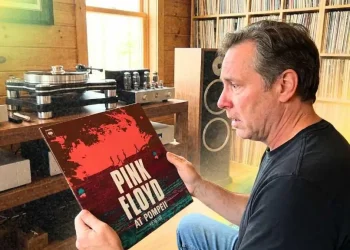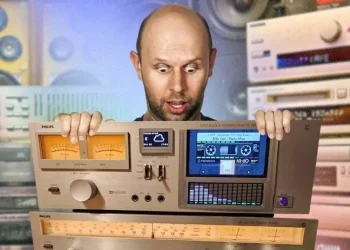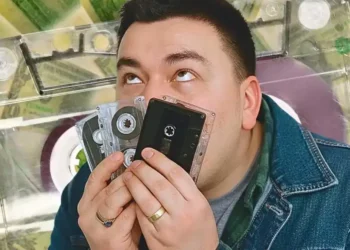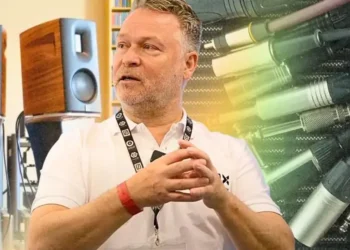Vinyl’s Hidden Problem: How the Loudness War Is Undermining Its Sound
Think vinyl records are safe from the loudness war that wrecked digital music? Think again. Many new vinyl pressings today are just as compressed, flat, and lifeless as their digital counterparts — only they cost more and promise less.
For audiophiles and casual collectors alike, that’s a frustrating truth.
Vinyl’s Appeal: Warmth, Space, and Soul
People often turn to vinyl to escape the overly compressed, loud mixes common in streaming and CDs. Vinyl is supposed to deliver dynamic range — the soft-loud contrast that gives music depth and emotional punch. And when done right, it does.
But more often these days, that vinyl you bought? It’s just a fancy version of the same squashed digital master.
The Loudness War: A Quick Recap
Since the early 2000s, music has been getting louder — not because artists are performing differently, but because labels want tracks that grab attention instantly. This led to aggressive compression, brickwall limiting, and the flattening of sound. It’s why modern music can sound loud and punchy, but also lifeless.
Originally, vinyl was spared. Cutting a record used to involve a dedicated master, adjusted specifically for the format. Engineers paid close attention to groove spacing, mono bass below 60Hz, and EQ roll-offs — all in the name of fidelity.
That kind of care, however, is now rare.
What’s Really Happening to Modern Vinyl
Many new vinyl releases — even reissues of classic albums — are now pressed from the exact same compressed digital files made for streaming or CD. It’s cheaper, faster, and sadly, considered “good enough” by some labels.
But vinyl isn’t built to handle these loud masters. When you cut compressed audio onto a record, the engineer has to lower the overall volume to avoid distortion — and you’re left with a record that’s quiet, yet still sounds flat and lifeless.
The Sound Quality You’re Missing
When digital loudness invades vinyl, even a good setup can’t save it. Here’s what listeners often hear:
- No Dynamic Range: Everything’s loud all the time — no rise, no fall, no excitement.
- More Surface Noise: Quieter records bring surface noise to the forefront, especially on budget turntables.
- Distorted Details: Vocals lose richness, cymbals blur, and highs get splashy.
- Listening Fatigue: At first, it sounds energetic. But after 10–15 minutes, your ears are tired. There’s no sonic break.
Even casual listeners are noticing. Many describe modern vinyl as narrow, congested, or just… boring.
Albums That Lost Their Magic on Vinyl
A few examples of popular records that suffered from poor mastering on vinyl:
- Prince – Purple Rain (2017 reissue): Used a compressed 2015 digital remaster. DR dropped by over 5 dB compared to the original LP.
- Bruce Springsteen – Born In The U.S.A. (2024 Red Vinyl): Cut at lower volume due to a dense master, making it sound flat compared to earlier pressings.
- Oasis – (What’s the Story) Morning Glory? (2014 reissue): Still stuck at DR5 — same as the original CD.
- David Gilmour – Luck and Strange (2024): Minimal difference between vinyl and digital master. The Atmos Blu-ray is the best version for sound quality.
- Norah Jones – Visions (2024): The stereo master came in at DR5. The vinyl nudged up to DR9, while the Atmos mix hit a full DR14.
- Red Hot Chili Peppers – Californication: Infamously brickwalled. The vinyl pressing is no better than the CD.
DR (Dynamic Range) measures the difference between the softest and loudest parts of a track. A DR of 12–14 means space and nuance. DR5 means everything is pushed to the limit.
The Pushback From Listeners
Audiophile communities on Reddit and forums like Steve Hoffman are fighting back:
- Sharing which pressings to avoid
- Recommending mastering engineers and labels
- Using tools like dr.loudness-war.info to check DR values before buying
- Even DIY remastering at home with Audacity or iZotope
They’re passionate — not just about owning records, but about hearing the music the way it was meant to sound.
Why This Keeps Happening
Truth is, most people aren’t listening closely. Music is background noise, played through Bluetooth speakers or earbuds. That’s why it’s mastered to be loud and punchy, not detailed.
And for labels? Creating a vinyl-specific master takes time and money. Many indie artists don’t have the budget. Major labels often don’t see the point.
Besides, a lot of people buy vinyl for the artwork, the colors, or the nostalgia. If it’s going to sit sealed on a shelf or spin once on a suitcase turntable, sound quality takes a backseat.
So… Is Vinyl Still Worth It?
Absolutely — if the music is mastered with care.
When sourced properly, vinyl can sound rich, warm, and alive in a way digital formats sometimes can’t. But the magic only happens if the mastering engineer treats the format right.
How to Make Sure You’re Getting the Real Deal
If you’re serious about sound, here’s what to look for:
- Mastering Credits: Look for terms like AAA or notes about original analog tapes. If a well-known mastering engineer is named, that’s usually a good sign.
- Check the DR Scores: Use sites like dr.loudness-war.info to compare vinyl, CD, and digital versions of the same album.
- Buy from Quality Labels: MoFi, Analogue Productions, and Blue Note’s Tone Poet series are known for excellent vinyl mastering.
And remember — heavy vinyl or cool colors don’t guarantee quality. It’s the source material and the mastering that matter most.
Bottom Line:
If you’re buying vinyl for sound quality, make sure the pressing was made with care. Otherwise, you might just be paying for digital compression… on a prettier disc.
This article was rewritten by JournosNews.com based on verified reporting from trusted sources. The content has been independently reviewed, fact-checked, and edited for accuracy, neutrality, tone, and global readability in accordance with Google News and AdSense standards.
All opinions, quotes, or statements from contributors, experts, or sourced organizations do not necessarily reflect the views of JournosNews.com. JournosNews.com maintains full editorial independence from any external funders, sponsors, or organizations.
Stay informed with JournosNews.com — your trusted source for verified global reporting and in-depth analysis. Follow us on Google News, BlueSky, and X for real-time updates.













